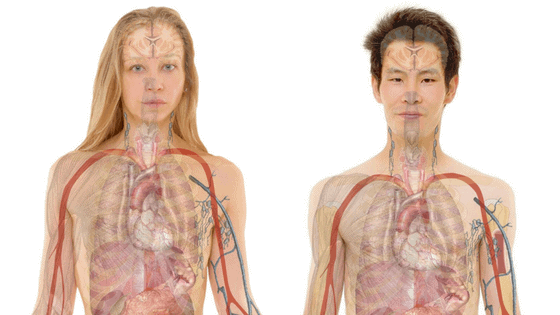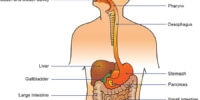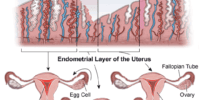What Is The Reproductive System? Male And Female Anatomy

The reproductive system is a complex biological system responsible for the production, transportation, and fertilization of gametes, as well as the development and nurturing of offspring. In humans, the reproductive system is composed of male and female anatomy, each with unique structures and functions that work in tandem to ensure successful reproduction.
Understanding the anatomy and physiology of the reproductive system is essential for proper reproductive health management and for informed decision making regarding family planning.
The male reproductive system consists of the testes, epididymis, vas deferens, seminal vesicles, prostate gland, and urethra, while the female reproductive system includes the ovaries, fallopian tubes, uterus, cervix, vagina, and external genitalia. Each of these structures plays a critical role in the production, transportation, and fertilization of gametes, as well as the development and nurturing of offspring.
Together, the male and female reproductive systems work in concert to facilitate the continuation of the human species. In this article, we will provide an overview of the male and female reproductive anatomy and their functions in the reproductive process.
Key Takeaways
- The reproductive system is responsible for production, transportation, and fertilization of gametes.
- The male and female anatomy have unique structures and functions that work together.
- The male reproductive system produces and transports sperm, while the female reproductive system includes ovulation, fertilization, and pregnancy.
- Understanding reproductive health and family planning is important, as the reproductive system is essential for the continuation of the human species.
Male Reproductive Anatomy: Testes and Epididymis
The male reproductive anatomy consists of various structures, including the testes and epididymis, which play critical roles in producing and storing sperm.
The testes are two oval-shaped organs located in the scrotum, a sac of skin located outside the body. They are responsible for producing sperm and the male hormone testosterone. The testes are surrounded by a layer of muscle fibers that can contract and relax, regulating the temperature of the testes to ensure optimal sperm production.
The epididymis is a long, coiled tube located on the back of each testis. It acts as a storage and maturation site for sperm, allowing them to mature and become motile before they are ejaculated during sexual intercourse. The epididymis connects to the vas deferens, a muscular tube that carries sperm up into the body and towards the prostate gland.
The testes and epididymis are two essential structures in the male reproductive system, working together to produce and store sperm, which is vital for reproduction.
Male Reproductive Anatomy: Vas Deferens and Seminal Vesicles
Located near the prostate gland, the vas deferens connects the epididymis to the ejaculatory duct and is an essential part of the male reproductive system. The vas deferens is a muscular tube that transports mature sperm from the epididymis to the urethra during ejaculation. It is responsible for moving millions of sperm cells through its lumen, which mixes with fluid from the seminal vesicles, prostate gland, and bulbourethral gland to form semen.
The vas deferens plays a crucial role in male fertility, and blockages or damage to the tube can lead to infertility. While the vas deferens may seem like a straightforward structure, it has a fascinating history in medicine and society.
The vasectomy, a surgical procedure that cuts and seals the vas deferens, is a popular form of male contraception. This method is irreversible and prevents sperm from entering the semen, effectively preventing pregnancy. However, the procedure remains controversial in some cultures and communities, with debates surrounding its morality and accessibility.
Male Reproductive Anatomy: Prostate Gland and Urethra
Situated in close proximity to the bladder and rectum, the prostate gland is a small, walnut-shaped gland that is an important part of the male genitourinary system. It is located just below the bladder and surrounds the urethra, which is the tube that carries urine and semen out of the body. The prostate gland produces a fluid that is a major component of semen, which helps to nourish and protect the sperm during ejaculation.
The urethra, on the other hand, is a tube that runs from the bladder through the prostate gland and out through the penis. It serves as a conduit for both urine and semen to exit the body. The prostate gland and urethra are interconnected, as the prostate gland surrounds the urethra and can affect its function. For instance, an enlarged prostate gland can compress the urethra and cause difficulty with urination. Understanding the anatomy and function of the prostate gland and urethra is important for maintaining male reproductive health.
| Prostate Gland | Urethra | |
|---|---|---|
| Small, walnut-shaped gland | Tube that runs from bladder through prostate gland and out through penis | |
| Located just below the bladder and surrounds the urethra | Serves as a conduit for both urine and semen to exit the body | |
| Produces fluid that is a major component of semen | Can be compressed by an enlarged prostate gland, causing difficulty with urination | |
| Helps to nourish and protect sperm during ejaculation | Important for maintaining male reproductive health | |
| Interconnected with the urethra | , which allows urine and semen to pass through the penis during ejaculation and urination. |
Female Reproductive Anatomy: Ovaries and Fallopian Tubes
Positioned adjacent to the uterus on either side of the pelvic cavity, the paired gonads in the female body play a crucial role in reproduction. These gonads are known as the ovaries, and they produce and release eggs or ova, which are fertilized by male sperm during sexual intercourse.
The ovaries also produce hormones such as estrogen and progesterone, which play a vital role in regulating the menstrual cycle and supporting pregnancy.
The fallopian tubes, also known as oviducts, are a pair of narrow tubes that extend from the ovaries to the uterus. These tubes are responsible for transporting the released eggs from the ovaries to the uterus, where they can be fertilized by sperm.
Additionally, the fallopian tubes also play a crucial role in the early development of the fertilized egg into an embryo before it implants in the uterus.
Overall, the ovaries and fallopian tubes are essential components of the female reproductive system, and understanding their anatomy and function is crucial for maintaining reproductive health.
Without the ovaries, there would be no eggs for fertilization, and reproduction would not be possible.
The production and regulation of hormones by the ovaries are essential for maintaining a healthy reproductive system and overall health in females.
The fallopian tubes are not just transport tubes but also play a crucial role in the early development of the fertilized egg, making them an integral part of the female reproductive system.
Female Reproductive Anatomy: Uterus and Cervix
The uterus and cervix are integral components of the female reproductive process, playing essential roles in pregnancy and childbirth. The uterus, also known as the womb, is a muscular, pear-shaped organ located in the pelvis. It is designed to house and nourish a growing fetus during pregnancy. The uterus is composed of three layers: the endometrium, the myometrium, and the perimetrium. The endometrium is the innermost layer and is shed during menstruation if fertilization does not occur. The myometrium is the middle layer, consisting of smooth muscle that contracts during labor to help push the baby out. The perimetrium is the outermost layer that covers the uterus.
The cervix, also known as the neck of the uterus, is the lower part of the uterus that connects to the vagina. It has a small opening called the cervical os that allows sperm to enter during intercourse and also expands during childbirth to allow the baby to pass through. The cervix produces mucus that changes consistency throughout the menstrual cycle to aid in fertility and prevent infection. Abnormalities in the cervix, such as cervical cancer, can affect fertility and require medical intervention. Overall, the uterus and cervix are crucial components of the female reproductive system that work together to support pregnancy and childbirth.
| Uterus | Cervix | ||
|---|---|---|---|
| Muscular, pear-shaped organ | Lower part of the uterus | ||
| Composed of three layers: endometrium, myometrium, perimetrium | Has a small opening called the cervical os | ||
| Houses and nourishes a growing fetus during pregnancy | Connects to the vagina | ||
| Endometrium sheds during menstruation | Produces mucus that changes consistency throughout the menstrual cycle | ||
| Myometrium contracts during labor to push baby out | Expands during childbirth to allow the baby to pass through | Contains the cervix, which is the opening to the uterus and can be felt during a gynecological exam. |
Female Reproductive Anatomy: Vagina and External Genitalia
The external female genitalia, including the labia majora and minora, clitoris, and vaginal opening, are crucial for sexual function and play a vital role in female sexual health.
The labia majora are the outermost folds of skin that protect the vaginal opening and other structures of the vulva.
The labia minora are the inner folds of skin that lie within the labia majora and surround the clitoris.
The clitoris is a highly sensitive organ located at the front of the vulva that plays a key role in female sexual arousal and orgasm.
The vaginal opening is the entrance to the vagina, which is a muscular canal that connects the uterus to the external genitalia.
The vagina has several functions, including sexual intercourse and the passage of menstrual blood and childbirth.
It is lined with a mucous membrane that contains numerous glands that secrete fluids to lubricate and protect the vagina.
The external female genitalia also play a crucial role in maintaining female sexual health by providing a barrier against infection and injury and by producing hormones that help regulate the menstrual cycle.
Male Reproductive Functions: Sperm Production and Transportation
Having discussed the female reproductive anatomy, we now shift our focus to the male reproductive system.
The male reproductive system is responsible for producing and transporting sperm, which is necessary for fertilization and reproduction.
Sperm production and transportation involve a complex process that occurs in various parts of the male reproductive system.
Sperm production begins in the testes, which are two small oval-shaped organs located in the scrotum.
The testes are responsible for producing testosterone and sperm.
Sperm production occurs in the seminiferous tubules, which are located within the testes.
These tubules are lined with cells that produce and nourish the sperm.
Once the sperm is produced, it is transported through a series of ducts, including the epididymis, vas deferens, ejaculatory duct, and urethra, before being released during ejaculation.
The male reproductive system is a complex and intricate system that plays a crucial role in human reproduction.
Female Reproductive Functions: Ovulation, Fertilization, and Pregnancy
Ovulation, fertilization, and pregnancy are integral processes in the reproductive cycle of females. Ovulation is the release of a mature egg from the ovary into the fallopian tube, where it may be fertilized by sperm. This process is controlled by hormones, specifically follicle-stimulating hormone (FSH) and luteinizing hormone (LH), which are secreted by the pituitary gland.
Once the egg is released, it travels through the fallopian tube towards the uterus. If sperm are present in the fallopian tube, one may fertilize the egg, resulting in pregnancy.
If fertilization occurs, the fertilized egg, or zygote, begins to divide and travels towards the uterus. It may implant in the lining of the uterus, where it will continue to develop into an embryo and eventually a fetus.
If fertilization does not occur, the unfertilized egg and the lining of the uterus are shed during menstruation.
Pregnancy is a complex process that involves multiple organs and hormones, and it is essential for the continuation of the human species. Understanding the menstrual cycle and the processes of ovulation and fertilization can help women and couples make informed decisions about their reproductive health and family planning.
Conclusion
In conclusion, the reproductive system is a complex system that involves both male and female anatomy.
The male reproductive system comprises the testes, epididymis, vas deferens, seminal vesicles, prostate gland, and urethra, whereas the female reproductive system comprises the ovaries, fallopian tubes, uterus, cervix, vagina, and external genitalia.
The male reproductive system is responsible for sperm production and transportation, while the female reproductive system is responsible for ovulation, fertilization, and pregnancy.
Both male and female reproductive systems work together to achieve the ultimate goal of reproduction.
Understanding the anatomy and functions of the reproductive system is crucial for individuals seeking to conceive or prevent pregnancy. Furthermore, knowledge of the reproductive system is essential for medical professionals in diagnosing and treating reproductive system disorders.
Overall, the reproductive system is a vital system that plays a significant role in human life.









